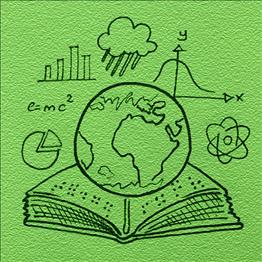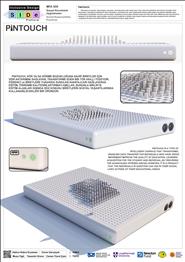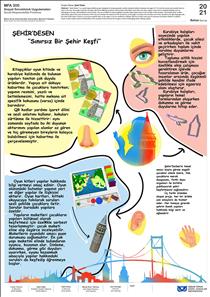PinTouch

DESIGNED BY:
Hatice Kübra Eryaman, Ceren Sarıçiçek, Musa Yiğit, Yasemin Green, Canan Çam Yücel (SDFB)
PROJECT DESCRIPTION:
The educational material designed as part of this project aims to make it easier for persons with visual disabilities to transfer concepts and information they encounter in their school and social lives. Certain important issues have been identified in line with the meetings and discussions held with our NGO design partner during the development process of our project. These issues are;
- The educational material that will be developed should be open for use by everyone without any age or group limitations and thus build a common language,
- No one should be disadvantaged in educational environments, and the possible design solution should offer an exemplary interactive communication practice, which would, in turn, be reflected on social life.
- The educational material should transfer the required data, especially the visual content so that everyone can understand them, and it should offer equal access to education opportunities by building a universal language for the transfer of knowledge.
- Enabling the transfer of visual and/or conceptual data and ways of transfer, which are available to individuals with no impairment, to individuals with visual impairments,
- Developing a device for information or data transfer for interpersonal social interactions (in the individual's relationship with their friends or parents),
- Facilitating the communication, interaction, and data transfer between the parent with visual impairment and the child without impairment or between the child with visual impairment and parent without impairment, which affects the child's development process.
During the first stage of the design process, we focused on using new technologies in educational materials for communication and information transfer. However, it was observed that the educational materials produced for individuals with visual impairment are single dimensional and lack flexibility. Hence it was decided that the PinTouch educational material should offer the required flexibility and support the interaction with social life.
WHAT IS PinTouch?
PinTouch is a kind of smart surface that enables data transfer and transforms data format for individuals with visual impairment. It will increase accessibility in education and learning issues by offering a new approach to accessing information for students and individuals. However, it is a product that individuals can also use in their social lives in addition to education areas. Pintouch works on the principle of the pins' downward and upward movement with telescopic structures on a surface by way of exposing them the positive or negative air pressure. The air pressure generated by the air pump engines positioned in the case is transmitted to the individually positioned electronic valves for each pin, and with the received data from 'ecu', the air pressure to be transmitted to each pin changes simultaneously. A higher amount of air pressure is transmitted to the pins expected to form the final form's positive surfaces, while a lower percentage of air pressure is transmitted to the negative surfaces. In this way, the transformation of the surface into different forms can be achieved simultaneously. The design has a mainboard and software that read the desired forms and transfer them as data. With the support of software, the data that will be transferred by Pintouch's interface will be available through different educational materials, such as smart boards used in schools. This system allows the product to receive and transfer information from the wireless or wired server to which it is connected. In order to ensure the lightness of the product, the material of the bottom case is planned to be made of polyethene, the air conducting pipes will be produced by rubber material, and the pins will be aluminium. PinTouch has ECU, USB port and Bluetooth support for additional data entry.
CONCLUSION:
Many products produced as an “educational material” adopt a stereotypical kind of data transfer. Users often stay within the limits of the product in question and cannot or do not take this interaction with the product beyond their education life. This situation presents an inconsistency related to the acquisition of information and its use concerning real life. PinTouch offers a contrast to these adverse effects. The relationship between the individual and PinTouch is entirely based on personal experience. The individuals with visual impairment can use this design beyond their education life, and they will also have access to information and its transfer which might be needed in their interaction with their peers or their community members. Thus, PinTouch, in a single product, offers a solution for many problems with current educational materials used both as educational materials and interactive transfer tools.

